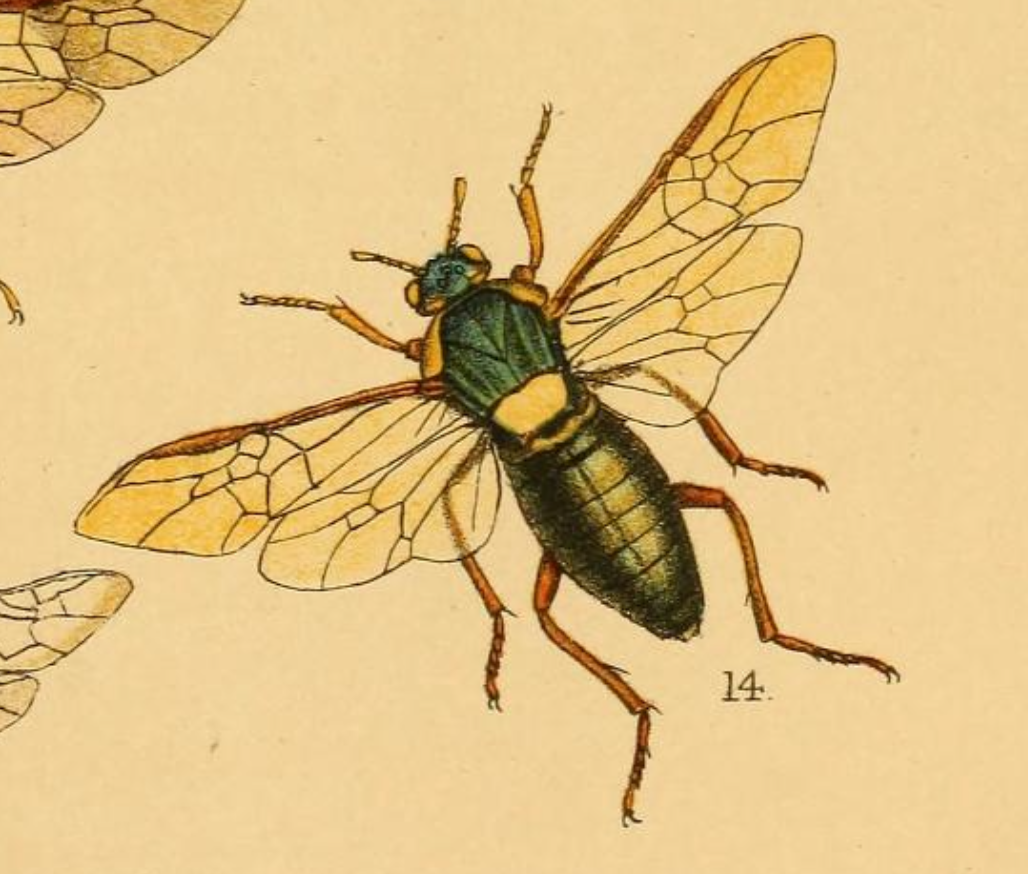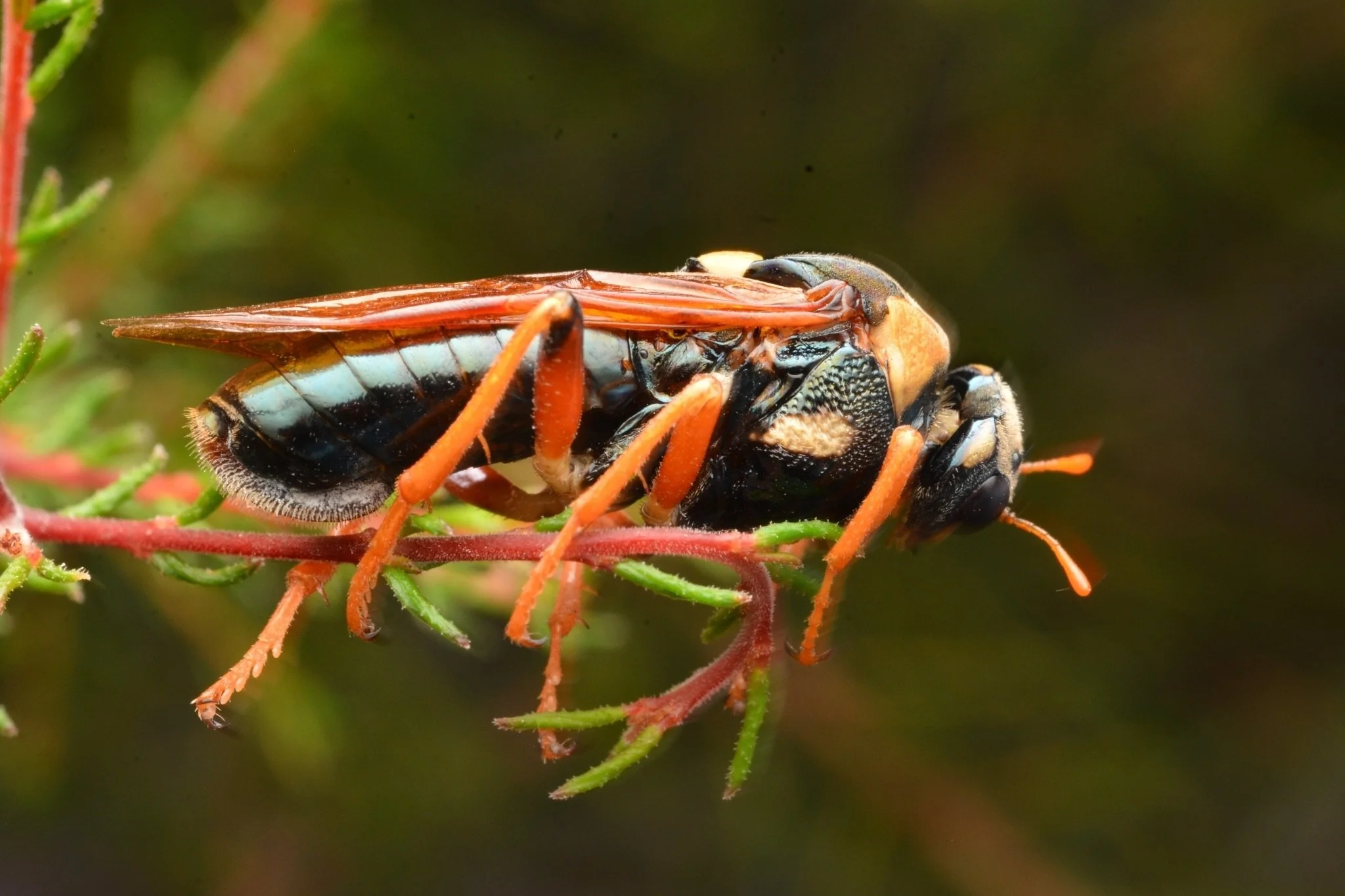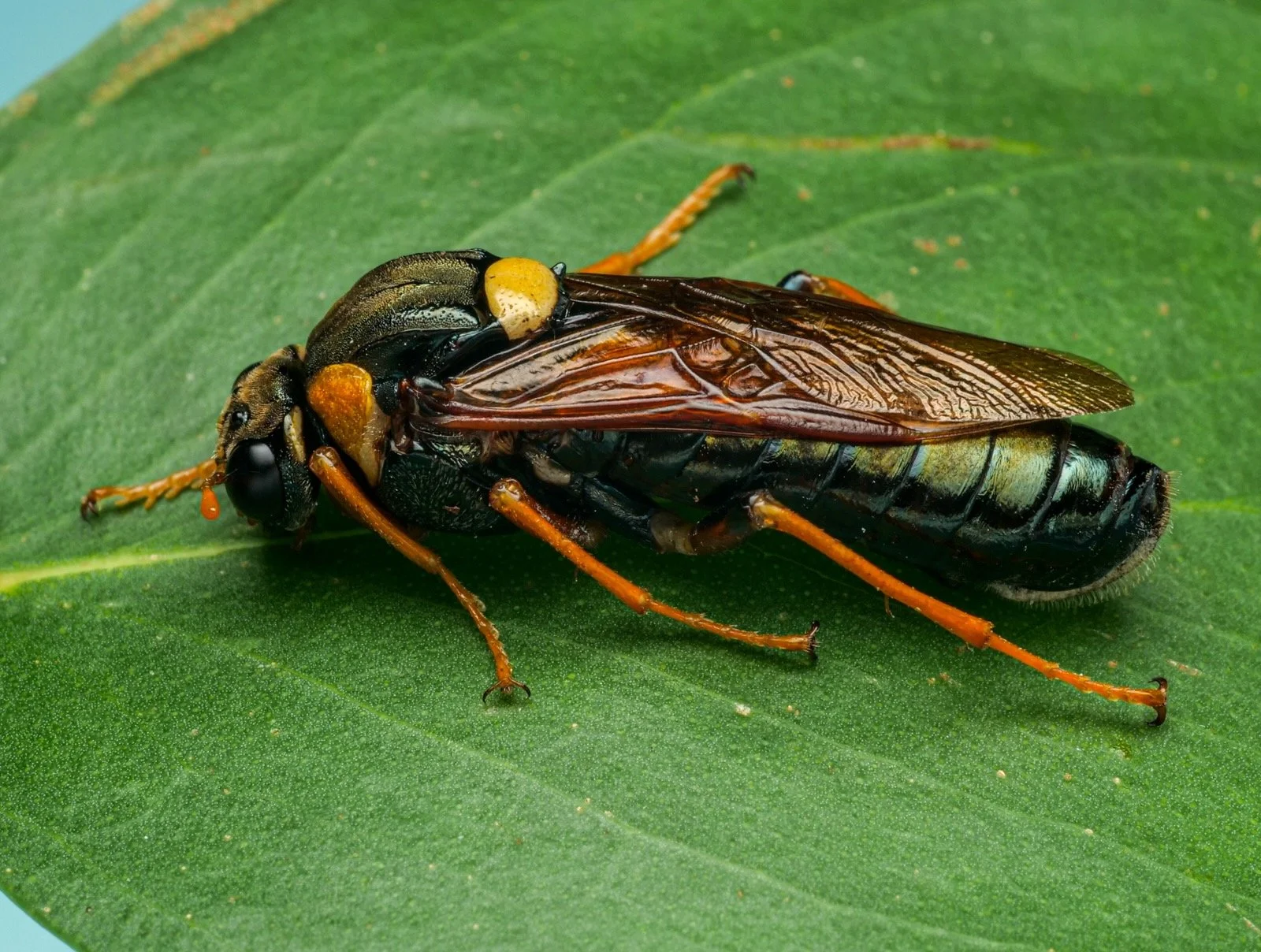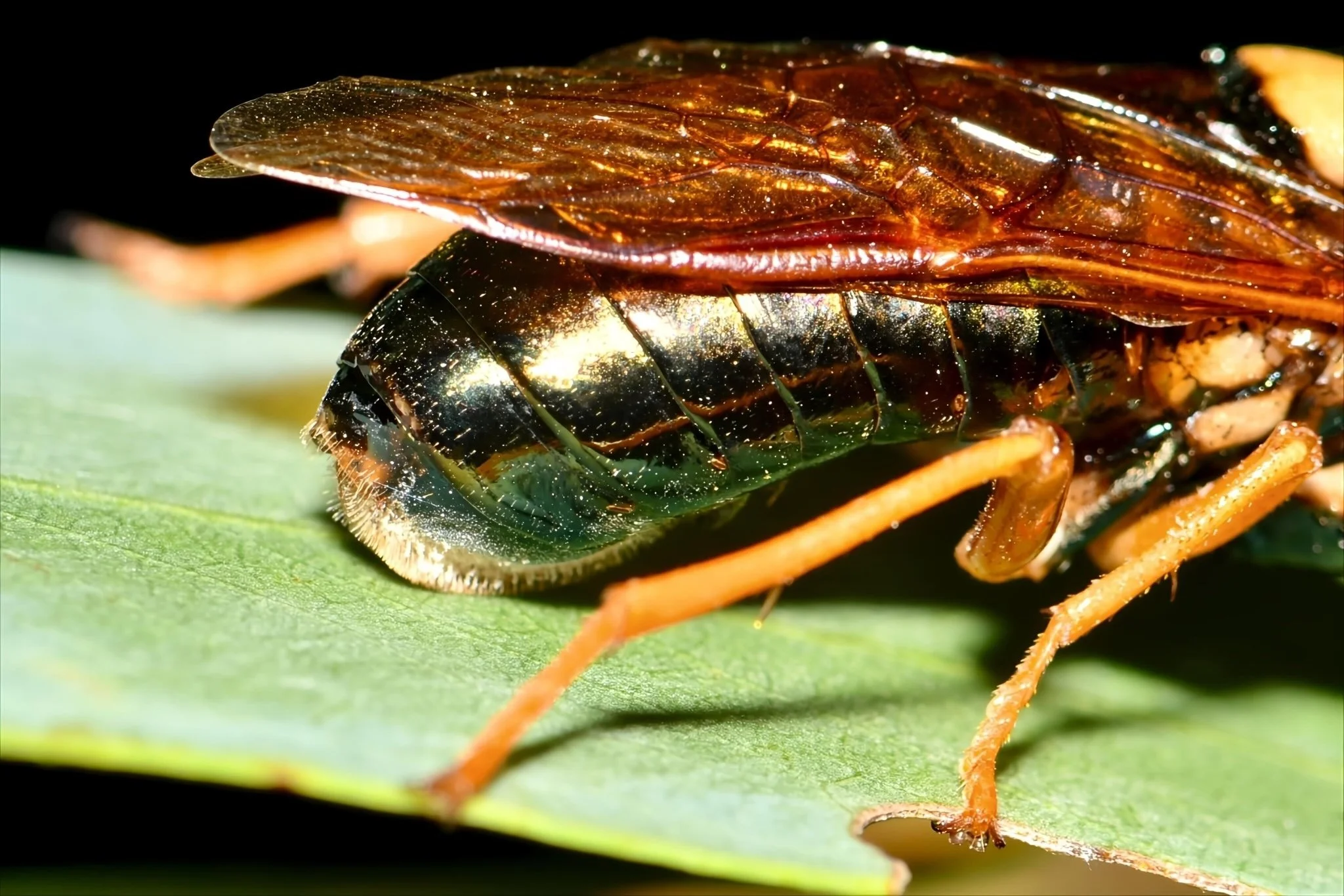Perga dorsalis vs Perga affinis
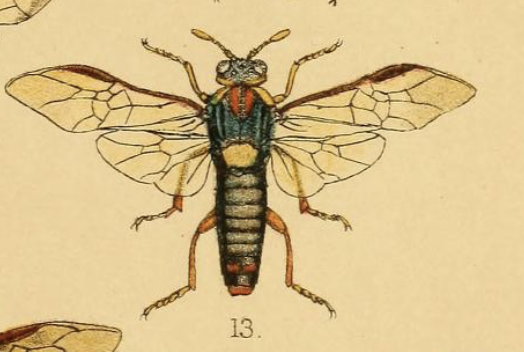
Workbook
My goal here is to assess whether it is possible to separate the two similar sawfly species Perga dorsalis and Perga affinis, using field photographs of the whole insect.
First descriptions
Perga dorsalis and Perga affinis have a long taxonomic history.
Perga dorsalis Leach 1817 is the type species for the genus Perga. Leach provided a colour drawing of the male of this species (table 148, fig. 1) and a brief description of the colour of various body parts.
Perga affinis was first described by Kirby in 1882, again from a male specimen. His paper shows coloured drawings of both the male and female of this species, as well as Perga dorsalis (plate I).
Drawings of male and female Perga affinis and Perga dorsalis from Kirby (1882)
How to separate P. dorsalis and P. affinis?
Kirby (1882) did not make a comparison between the two species. His descriptions and drawings show they are very similar and some later authors (e.g. Morice, 1919) suggested they are synonymous.
Benson (1939) separated females of the two species using a set of characters including:
shape of hairs on the sides of the ovipositor valves
relative distance between the pair of hind ocelli and a hind ocellus and the compound eye
relative length and breadth of the postocellar region
relative lengths of the hind basitarsus and the following 3 tarsal segments
These differences are difficult to measure or assess with accuracy in typical field photos, limiting the application of Benson’s criteria for species identification.
Riek (1961) used the morphology and spacing of hairs on the ovipositor valves for the principal separation of P. dorsalis and P. affinis. These differences are evident in the following images of the rear of the abdomen of holotypes of the two species (provided by National Museum Victoria).
Again, however, only the best quality photos of specimens in the field are likely to reveal these differences.
Are there subspecies of P. affinis and P. dorsalis?
Riek also claimed that 3 subspecies of both P. affinis (P. affinis affinis, P. affinis insularis, P. affinis atrata) and P. dorsalis (P. dorsalis dorsalis, P. dorsalis castanea, P. dorsalis nitida) can be recognised. He states that “characters are now recognised…which make separation of the two species very easy”(p.237) and which can be used for identification of both males and females.
The characters used in his key are colour of the hind femur, coxae and abdomen and pilosity (density of hairs) of the genae.
All except the last of these features could be readily seen in field photos of the whole insect, making Riek’s key a potentially valuable tool for separation of P. dorsalis and P. affinis and their subspecies.
However, the most recent catalogue of Pergidae (Schmidt & Smith, 2006) does not treat Riek’s taxa as distinct subspecies. These authors point out that the three P. dorsalis subspecies overlap in Victoria and that the character used to separate the P. affinis subspecies (legs dark vs. pale) is subject to variation, even among specimens from the same locality.
Indeed, Riek himself states that “one female Perga affinis from Hazelwood, Victoria, has the base, apex and caudal margin of the hind femur darkened but not black. In the other two females examined from this locality the hind femur is entirely pale”(p.237). So it is likely that Riek’s subspecies just represent normal variation of each species over its range.
It follows that his key cannot be reliably used for separation of P. dorsalis and P. affinis.
Using ovipositor sheath hair morphology to separate P. dorsalis and P. affinis
Both Riek and Benson used the morphology and spacing of hairs on the ovipositor valves for the principal separation of P. dorsalis and P. affinis.
As noted earlier, a high quality photo is needed to visualise these structures at the resolution required for species separation.
However, it appears that this bar has been met in a significant number of iNaturalist observations of these species (10 for P. dorsalis, 12 for P. affinis as of 2nd July, 2025).
Images of some of these observations are shown in the panel below. Compare the hair morphology to the type images of P. dorsalis and P. affinis above to judge whether its ID is justified.
Separation of Perga affinis and Perga dorsalis by DNA barcoding
DNA barcoding holds great promise for resolving the phylogenetic relationships between sawfly taxa and this approach has been used in a study by Schmidt and Walter (2014). The authors used three gene regions for their analysis: (1) the 5’ end of the mitochondrial cytochrome c oxidase 1 gene (COI), (2) a fragment of the mitochondrial 16S rDNA gene, and (3) the D2 loop of the nuclear 28S rDNA gene.
An adult sawfly identified as Perga affinis (shown in this image) was DNA barcoded in this study.
P. dorsalis was not included in this or a later molecular study (Schmidt et al, 2017). So whether morphological differences in structures such as the ovipositor sheath hairs correlate with differences in DNA sequences between the two species remains an open question.
Image of specimen: PERGI043-12 downloaded from BOLD
References:
Benson, R.B. 1939. “A revision of the Australian sawflies of the genus Perga Leach, sens. lat. (Hymenoptera, Symphyta)”. The Australian Zoologist 9: 324-357. “ Biodiversity Heritage Library link.
Kirby, W.F. 1882. “List of Hymenoptera, with descriptions and figures of the typical specimens in the British Museum”. Vol. I. Tenthredinidae and Siricidae. London: British Museum, xxviii. Biodiversity Heritage Library link.
Leach, W.E. 1817. “The zoological miscellany; being descriptions of new, or interesting animals”. Vol. 3. Shoe-Lane, London: R. and A. Taylor, 151 pp. Biodiversity Heritage Library link.
Morice, F.D. 1918. “Notes on Australian sawflies, especially the "Authors' Types" and other specimens in the British Museum of Natural History and the Hope Collections of the Oxford University Museum; with diagnostic Synopses of the Genera and Species, and photographs illustrating their structural characters.” Transactions of the Entomological Society of London. Biodiversity Heritage Library link.
Riek, E. F. 1961. “The distribution and inter-relationships of Perga affinis Kirby and Perga dorsalis Leach (Hymenoptera, Symphyta)”. Proc. Linnean Soc. NSW 86, 237-240. Biodiversity Heritage Library link.
Schmidt, S. & Smith, D.R. 2006. “An annotated systematic world catalogue of the Pergidae (Hymenoptera)”. Contributions of the American Entomological Institute. 34, no 3. link to this catalogue from Pergidae of the World website
Schmidt, S. & Walter, G.H. 2014 “Young clades in an old family: Major evolutionary transitions and diversification of the eucalypt-feeding pergid sawflies in Australia (Insecta, Hymenoptera, Pergidae)” Molecular Phylogenetics and Evolution 74: 111-121.
Schmidt, S. et al. 2017 “Identification of sawflies and horntails (Hymenoptera, ‘Symphyta’) through DNA barcodes: successes and caveats”. Molecular Ecology Resources 17, 670–685.
This is a workbook page … a part of our website where we record the observations and references used in making species identifications. The notes will not necessarily be complete. They are a record for our own use, but we are happy to share this information with others.




